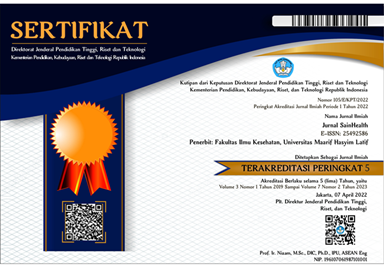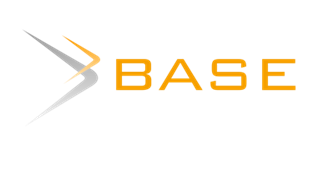ANALISIS RESIDU ANTIBIOTIK TETRASIKLIN PADA DAGING AYAM BROIlER DAN DAGING SAPI
DOI:
https://doi.org/10.51804/jsh.v3i2.600.22-32Keywords:
Tetracycline, Chicken, Cow, Thin Layer Chromatography, SpectrophotometricAbstract
Tetracycline are antibiotics with broad-spectrum that used routinely in veterinary medicine for animal treatment and prevention from infectious diseases. But, consuming antibiotics for long time and exceeding standards can lead to accumulation of antibiotic residues in the body. Based on SNI 01-6366-2000, the maximum residual limit (BMR) of tetracycline antibiotic is 0.1 mg/kg in meat.The purpose of this study was to determine the concentration of tetracycline residues in broiler chicken meat and beef that obtained in East Surabaya namely Manyar market, Sinar Baru market, Ampengan Batu market, Tenggilis Mejoyo market, Krempyeng market, Soponyono market, and Gunung Anyar market. This study used Thin Layer Chromatography (TLC) as qualitative test and Spectrophotometric method as a quantitative test to determine the residual levels of tetracycline antibiotics. This study was conducted on March 15 onto May 2 2019. Based on the study, about 32 broiler chicken and 13 beef samples detected by the TLC method showed that had negative results, there was no containing tetracycline residues in samples. Awhile the results of the spectrophotometric method showed that as many as 31 samples of broiler chicken and 13 beef samples showed that had positive results containing residues of tetracycline antibiotics that exceed of the standard. Based on the results obtained that average concentration of tetracycline in samples of broiler chicken meat about 1,7 mg/kg and 0,8 mg/kg in beef samples. Descriptively,tetracycline residues in broiler chicken meat were higher than beef.
Downloads
Published
Issue
Section
License
Jurnal SainHealth is licensed under Creative Commons Attribution 4.0 International License.
Under the following terms:
Attribution — You must give appropriate credit, provide a link to the license, and indicate if changes were made. You may do so in any reasonable manner, but not in any way that suggests the licensor endorses you or your use.
No additional restrictions — You may not apply legal terms or technological measures that legally restrict others from doing anything the license permits.
















